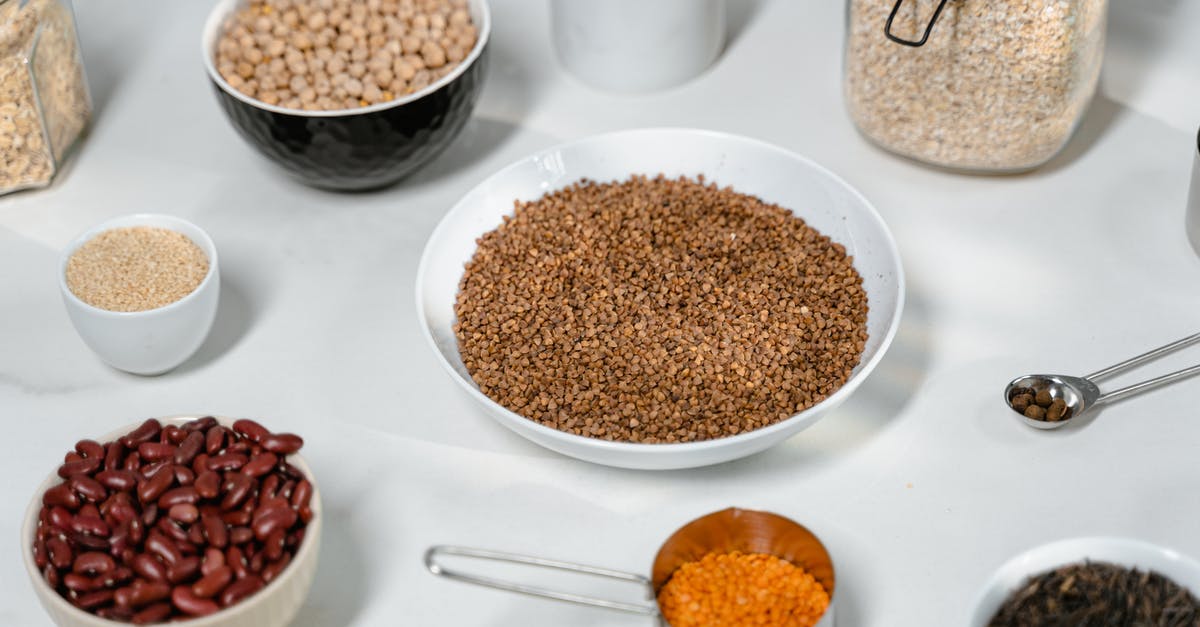Why do canned beans have less FODMAPs than dried beans?

Several sources have claimed that canned beans (after discarding the water in the can) are significantly lower in FODMAPs, particularly galacto-oligosaccharides, compared to cooked dried lentils. I'm interested in reducing galacto-oligosaccharides as a way of reducing flatulence and indigestion symptoms.
For instance, https://www.glnc.org.au/resources/hot-topics/how-to-enjoy-legumes-on-a-low-fodmap-diet/ seems to claim a two-fold reduction:
Canned legumes are much better tolerated than dried legumes, due to having a lower FODMAP content. Canned lentils are safe at 1/2 cup, whilst butter beans and chickpeas are low FODMAP at 1/4 cup. Keep in mind that if you choose dried over canned, it is likely the same portion won’t be tolerated if you are sensitive to GOS.
Dried red and green lentils: dried lentils require a little more prep and will take some time to cook prior to being ready to eat. Keep these to 1/4 cup serve of cooked lentils – they’re are a fabulous addition to curries and soups!
Lentils may be cooked without prior soaking, but presumably cooking dried chickpeas involves soaking them, which should reduce the galacto-oligosaccharides. Why would canning reduce this process further? Could soaking the dried legumes for a longer period of time and replacing the water a couple times reduce the FODMAPs to the same level as canned beans (maybe in the fridge to prevent bacterial growth)? Maybe I should soak the beans, cook them, and then soak them further? Or is there something else special about the canning process compared to using dried beans?
Best Answer
Why would canning reduce this process further [than soaking]?
Because canned beans are cooked. Cooking adds to further breakdown of many flatulence-causing elements. In fact, if the primary concern is flatulence and indigestion, several authoritative sources have recommended skipping soaking and just using longer cooking. I'll quote from my answer to a previous question here:
The main reason often cited for soaking is to prevent flatulence. However, if you throw out the soaking water, you also throw out lots of nutrients. Recent research suggests that long slow cooking is a better solution and probably gets rid of more of the flatulence-causing components than a soak followed by a quick cook. And you get to retain more nutrients. To quote Harold McGee from On Food and Cooking:
One kind of troublesome carbohydrate is the oligosaccharides [which are water soluble].... But the latest research suggests that the oligosaccharides are not the primary source of gas. The cell-wall cements generate just as much carbon dioxide and hydrogen as the oligosaccharides--and beans generally contain about twice as much of these carbohydrates as they do oligosaccharides.
Based on this research, McGee suggests:
[Soaking] does leach out most of the water-soluble oligosaccharides--but it also leaches out significant quantities of water-soluble vitamins, minerals, simple sugars, and seed-coat pigments: that is, nutrients, flavor, color, and antioxidants. That's a high price to pay. An alternative is simple prolonged cooking, which helps by eventually breaking down much of the oligosaccharides and cell-wall cements into digestible simple sugars.
Specifically regarding galacto-oligosaccharides, there are studies that have attempted to quantify the role of soaking and cooking. That linked study concluded:
During soaking, total ?-GOS content decreased between 10% (lentil and faba bean) and 40% (chickpea). [...] Cooking further decreased ?-GOS and increased total dietary fibre content.
The explanation for the cooking effect is given later in the article:
Cooking after soaking led to a further decrease in raffinose (?32%), stachyose (?25%) and verbascose (?35%) and to a significant increase in galactose content (+54%) in the whole dish. [...] This should be attributed to further enzymatic degradation, due to better conditions for the expression of ?-galactosidase activity. Alpha-galactosidase from lentils are active in the temperature range 20–50?°C and up to 65?°C, and have optimal pH of 4.7, 5.5 or 6.1, depending on their isoforms. [...] During heating, the temperature increased progressively and conditions were met for higher ?-galactosidase action.
Basically, elevated cooking temperatures increase the activity of the enzyme alpha-galactosidase, which is naturally found in beans and lentils (and is perhaps better known as the active ingredient in many anti-flatulence supplements/medications).
Hence, canned beans that are thoroughly cooked likely get both the breakdown of the cell-wall cements that McGee mentions as well as increased breakdown of GOS through elevated enzyme action.
I would note, however, the detail in the abstract to that study that each type of bean or lentil will likely respond somewhat differently, as each has its own particular makeup of problematic elements (and those elements will be affected in different ways by cooking). For example, this study on red kidney beans showed significant reduction in lectins, raffinose, and stachyose during soaking, and significant further reduction in lectins and raffinose during cooking. But cooking provided no significant reduction to stachyose.
Could soaking the dried legumes for a longer period of time and replacing the water a couple times reduce the FODMAPs to the same level as canned beans (maybe in the fridge to prevent bacterial growth)?
Well, as seen in the charts for example in the last linked study, increased soaking time shows diminishing returns. Replacing the water could help a bit, but refrigeration may also slow down or stop some enzyme activity that could help in breakdown. (The linked article notes that 77F was chosen for a soaking temperature because it is used by commercial canned bean producers.)
Maybe I should soak the beans, cook them, and then soak them further?
Again, while this is possible and likely to have some effect, there will be diminishing returns. And with each replacement of soaking water, you will like lose more beneficial nutrients from the legumes anyway (along with the things you are trying to get rid of).
Or is there something else special about the canning process compared to using dried beans?
Well, the only thing that might be special about the canning process is the high temperatures canned beans are subjected to for sterilization. In a cursory search, I didn't immediately come up research that quantifies what that might do, but my guess is that it could lead to further breakdown of some flatulence-causing elements. However, I'm not sure about the effect of high-temperature cooking on galacto-oligosaccharides in particular, as the first article linked above postulates that much of the breakdown is caused by enzyme activity that wouldn't happen at canning temperatures. So, in that case, it's just the long cooking process for canned beans in general that may have some benefits.
Pictures about "Why do canned beans have less FODMAPs than dried beans?"



Quick Answer about "Why do canned beans have less FODMAPs than dried beans?"
This is because some of the FODMAPs that are in these legumes will migrate into the liquid (since FODMAPs are water soluble). The end result is a decrease in FODMAP concentration since canned legumes are rinsed before consumption and the liquid is discarded.Why are canned beans low FODMAP?
When beans are canned in water or brine, some of the FODMAPs leach out into the water. You can drain and rinse the canned beans before consumption to wash away these FODMAPS (4). This won't completely rid them of FODMAPS, though. If using dried beans, you can simply soak them overnight to get a similar effect.Are canned beans low FODMAP?
Researchers at Monash University, which is where the FODMAP diet was developed, found that canned beans are lower in FODMAPs than beans cooked from scratch. Cooking beans and then straining them and discarding the liquid also reduces FODMAP content. Sprouting beans lowers their FODMAP content as well.Are canned beans healthier than dried?
Are dried beans better for you than canned beans? The short answer is yes: Dried beans are more nutritionally dense, with more protein, fiber, iron, potassium and magnesium, and less sodium than canned beans.Why are canned beans easier to digest?
Canned bean varietals are chosen for their thick skin that will not breakdown in the ultra-high heat canning process, thus those varietals are harder to digest. Better Beans: Our beans are easier to digest because they are freshly harvest beans. In fact, we only use bean from the last season.Beans - Canned Beans vs. Dried Beans, Is There A Difference?
Sources: Stack Exchange - This article follows the attribution requirements of Stack Exchange and is licensed under CC BY-SA 3.0.
Images: cottonbro, cottonbro, MART PRODUCTION, MART PRODUCTION
